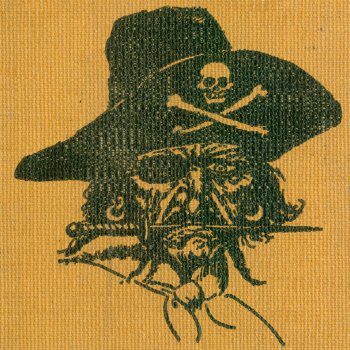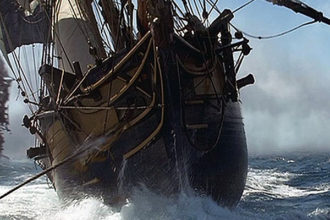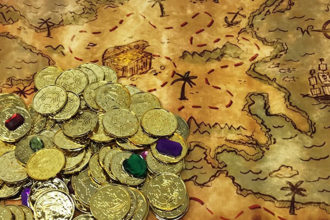6 Kinds of Waterborne Cutthroats from History
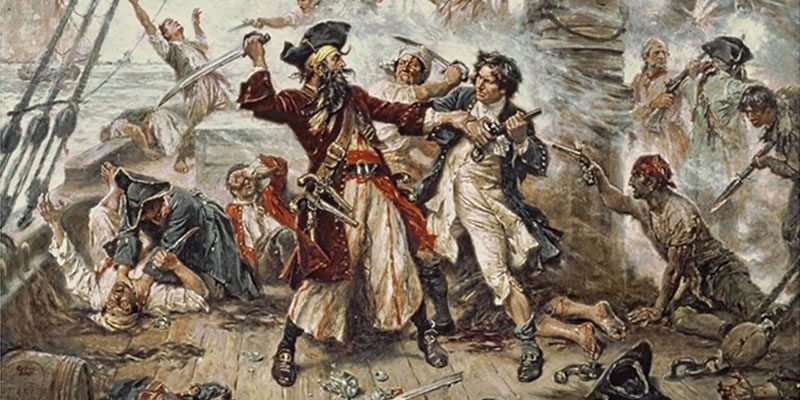
I thought this guest post by Mark Cookman might be interesting to listeners who caught my spot as a guest on the Dungeon Master’s Block podcast. In the episode we talked about pirate campaigns and this look at the different types of pirates is a good follow-up.
-Shawn
Diversity spices up any encounter table and the goal of this article is to provide you, the GM, with a description of 6 different kinds of sailing villains from the pages of history so that you can spice up your own pirate encounters. We are going to explore the differences between six types of seafaring scoundrels. They are pirates, privateers, buccaneers, corsairs, smugglers, and marooners. When we are done, you’ll know what each of these names mean, you’ll understand why the old adage ‘once a thief, always a thief’ also applies to pirates, and you’ll also learn what pirates called themselves. So freshen your drinks, pull up your chairs, and let’s begin.
1) Pirates
A pirate is a person who practices piracy. Piracy is any robbery or other violent crime, for private ends and without authorization by any country, committed on the seas. Basically, pirates attacked any vessel they chose without regard to nationality in order to make a profit. Typically pirates would attack a ship to force it to stop, then board that ship. After taking the ship, or securing the surrender of the crew, pirates would plunder the ship of its valuables and take any prisoners worth a ransom. After that, the pirates might try to recruit crew members from the plundered vessel to replace their losses or fill out their own crew. Finally, the pirates would return to their own ship and sail away. Contrary to popular belief, pirates were not always bloodthirsty killers. Many pirates considered piracy their occupation. These men simply wanted to do their job and get away with their plunder as quickly and easily as possible. If the captain and crew of the captured ship were not a hindrance, then they could often escape brutalization altogether. Some pirates, however, were in the business of torturing and killing. These pirates left a trail of plundered ships and murdered men where-ever they went. It is this second sort of pirate that has colored the meaning of the word. There were pirates of every nationality and a few ships were even mixed in nationality, but that was rare. Typically ship’s crews were of the same nationality and not diverse. Pirates and privateers were very much alike and sometimes the same.
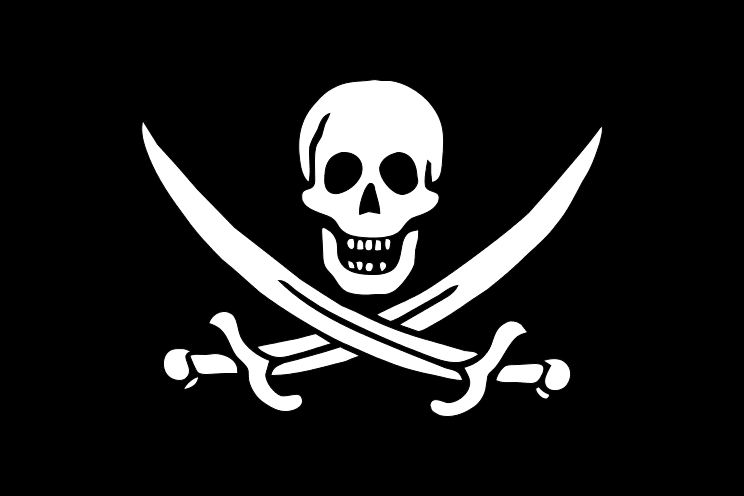
2) Privateers
A privateer was differentiated from a pirate by only one thing: a letter of marque. A letter of marque, which is sometimes called a letter of reprisal, was an official government sanction to harass enemy shipping granted most often during times of war. Sometimes these letters came directly from a king, but royal governors in the Caribbean could write them as well. A ship that carried a letter of marque was recognized as unofficial part of their country’s navy. They were given the permission to attack ships of the nations defined in their letter without sanction from their own navy, provided that they gave the crown its share (usually 20%) in the spoils. In most things, however, pirates and privateers were exactly the same. It was not uncommon for privateers to attack vessels of countries not defined in their letter of marque and thus become pirates hiding behind a letter of marque. Another common practice was for privateers to continue their business after the letter of marque had been revoked because the war had ended. Thus, the distinction between privateer and pirate was always a very fine one. There is another factor to consider in this. Governments attempted to keep themselves informed of the actions of their privateers by means of the prize court.
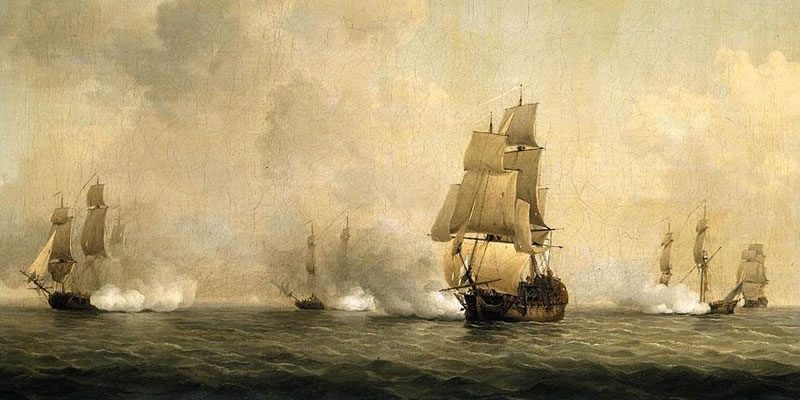
In order to sell the goods on their prize, privateers had to register their plunder with the prize court when they returned to port. The prize court inventoried the spoils of war taken by all privateers, deducted the kings share, and heard claims to the spoils by outside sources. For example, an English privateer engages a French privateer and wins the day. The English privateer captain decides to take the entire French vessel and their cargo as a prize. He selects a prize crew from his own crew to help man the French ship and keep its crew in line. Both ships sail back to the home port of the English privateer and the English captain turns the French ship and its cargo over to the prize court. The prize court, which was usually run by the royal governor, decides that the King will take the French ship as His share and publicly posts an inventory of the rest of the spoils for people to make claim against. Representatives of two English merchant companies look over the inventory and make claims against some of the French ship’s cargo. The prize court hears their claims and decides that the first has no true claim to the goods as they can produce no proof that the goods are theirs. The second company presents a better case. They demonstrate that a little over half of the cargo of the French ship carries their company symbol. Furthermore, they present the cargo manifest of one of their missing merchant ships that is presumed lost. The cargo manifest seems to match the same cargo bearing their logo from the inventory of the French prize ship, so the court awards that cargo to the merchant company. This procedure takes a little over a month. When the English privateer returns to port, the captain finds that what he thought would be a great fortune for he and his crew is now just some petty trade goods that a representative from the first merchant company is willing to purchase from him at one quarter of its value. This is the life of a legitimate privateer. To duck the prize court or to hide spoils from it was an act of piracy.
There is another factor to consider concerning privateers. To illustrate it I will pirate a sentiment that was expressed by Benjamin Franklin when he was asked about the legality of the American revolution. (Understand that Simon doesn’t often pirate the words of others, but Ben’s phrasing is exceptional.) Privateers are completely legal in the first person, such as our privateers, it is only in the third person, their privateers, that they become illegal. When you are the victim of a privateer, they are a pirate and nothing more. Spain never recognized or sanctioned privateering as legitimate. All privateers were pirates in the eyes of the Spanish. Spanish dominance and cruelty in the Caribbean is legendary. The buccaneers were a creation of that cruelty.
3) Buccaneers
From 1492, when Columbus claimed the new world for Spain, until 1588, when Admiral Lord Howard defeated the Spanish Armada, Spain completely dominated the Caribbean. Shortly after the defeat of her armada, Spain began to lose her colonies in the Caribbean to other countries. For the most part, the Spanish did not fight hard to keep these island colonies because they were busy plundering the natives of Mexico and South America of their riches. One of the colonies that was often contested was the French colony of Haiti on island of Hispaniola. When the French settlers arrived they found wild oxen and pigs roaming the land. These animals came from the original Spanish settlers who had long ago moved further west. The early French settlers made a trade out of hunting these animals, cooking their meat in long strips, and selling the meat to passing Spanish ships. The rack that these meat sellers used to cook the long strips of meat were called “boucans”, thus the Spanish sailors named these merchants “boucaniers”. The Spanish government quickly decided that these “boucaniers” posed a threat to the security of their colony of Santa Domingo on Hispaniola and began to move against them.
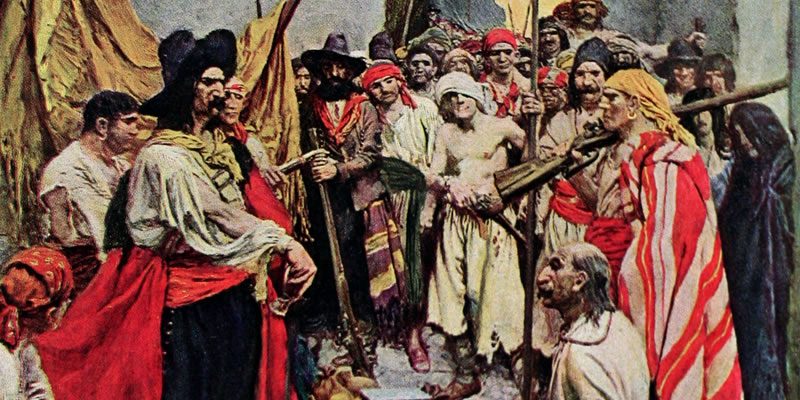
The buccaneers proved impossible for the Spanish to drive off. They began to retaliate against their Spanish oppressors using the tools at their disposal. The earliest buccaneer raids were conducted by canoes against Spanish ships moored off the shore of Haiti. The buccaneers, who prided themselves on their ability to hunt the wild pigs of Haiti with nothing but two long daggers, poured over the sides of the Spanish ships in the dark of night and silently killed all aboard. These tactics provided them with ships and from that point they differed only from Pirates in that their targets were almost exclusively Spanish. The marooners had a similar development.
4) Marooner
The word marooner comes from the Spanish word, “cimarron”, meaning wild or untamed. Cimarron was the name applied by the Spanish to runaway slaves, as well as Spanish deserters, in the Caribbean. It basically came to mean anyone of Spanish origin who lived in the wild away from Spanish civilization. The Spanish government made halfhearted attempts to destroy cimarron settlements, but the cimarron fought back using much the same tactics as the buccaneers. Just as the buccaneers, the cimarron, or marooners as they came to be called, targeted Spanish shipping and towns for their raids. A marooner came to be the name given to any pirate of African heritage. Maroon, the word for the act of leaving someone in a wild and untamed place has the same root, but does not otherwise relate to a marooner. We will discuss the punishment of marooning in a future lesson.
5) Corsairs
The term corsair refers to both pirates and privateers that raided Christian towns and shipping throughout the Mediterranean Sea region from bases on the coast of North Africa. A few corsair raids extended as far north as the coast of Ireland. Over 1 million Christians were sold as slaves in North Africa between the 15th and 19th centuries. The corsairs were driven not only by treasure, but also by a religious element of service. Good Muslims went off to make war against the Christians as a religious duty that might also make a little money on the side. From the corsairs point of view, they are the righteous ones and their victims are the “infidels”.
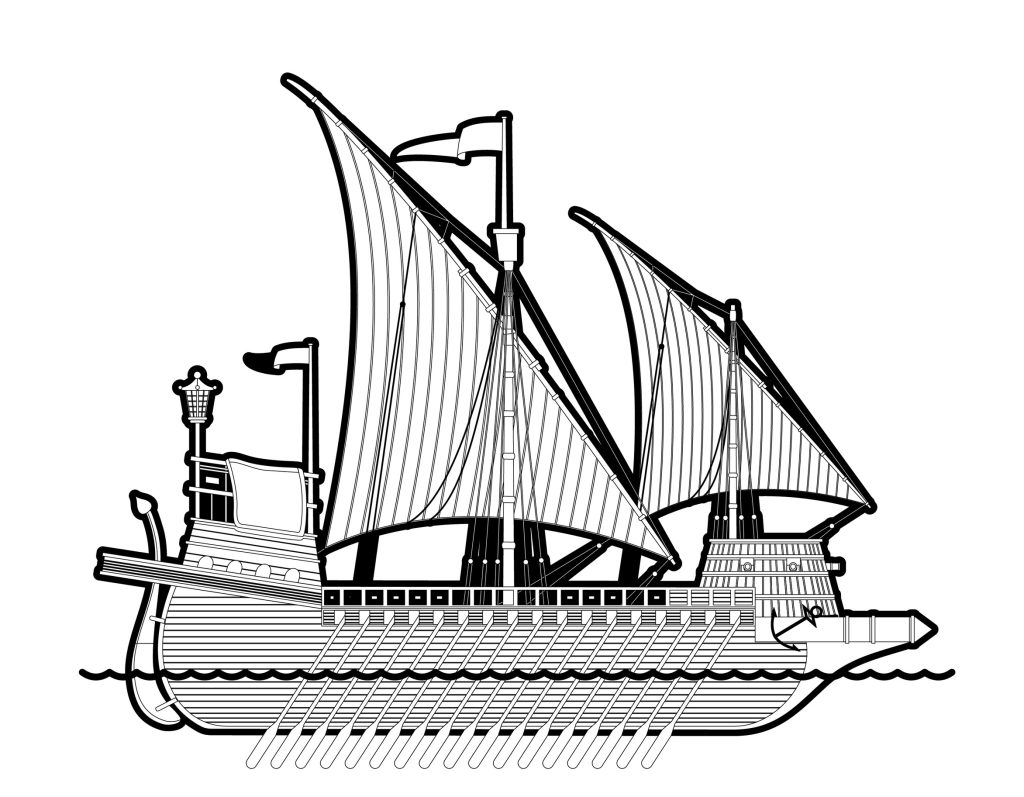
6) Smugglers
A smuggler is a form of pirate that carries and/or sells illegal or contraband goods. When Spain was dominant in the Caribbean, they declared that only Spanish merchants could trade with their colonies. All others were to be deemed enemies of the Spanish Crown and were subject to search and seizure if found in Spanish-controlled waters. It wasn’t that the colonies weren’t hungry for trade goods; they were. It was about keeping the money to be made from the colony in Spanish hands. Smugglers appear to be legitimate merchants and often times they are just that. They want nothing more than to pass quietly by the patrols carrying their illicit cargo to its destination. The owner of the colony however sees illicit trade as piracy because it takes money and goods out of what is supposed to be a closed economic system just as surely as raiding does.
What did pirates call themselves?
Well that depended upon their education and status when they went to sea. Pirates often called themselves pirates among themselves, but were “merchant crewmen” when among those who would hang them for their occupation. Privateers usually prided themselves upon the fact that they were privateers. Privateers took to using the term “Gentleman of Fortune” to describe themselves and the term was quickly picked up by the pirates. This became the general term that polite society used to favorably describe pirates, as well as the term that many pirates adopted to describe themselves.
Well mates, that’s it for this article. I hope that you’ve enjoyed it and learned a little that might spice up your next encounter with pirates. Next time we’ll discuss the major crew positions on a pirate ship and their responsibilities. Until then, may all be well with you and yours.
Mark Cookman is a writer, educator, and jack-of-all-trades with professional experience in Armor Making, Automobile Racing and Repair, Brewing, Classical Fencing, Delivery Driving, Doughnut Making, and Game Design just to list a few skills. He has been gaming since 1982 with AD&D 1st Edition. He is the author of Welcome to Mortiston, USA and the chief cook and bottle washer at Black Shark Enterprises. Mark always has his dice.


